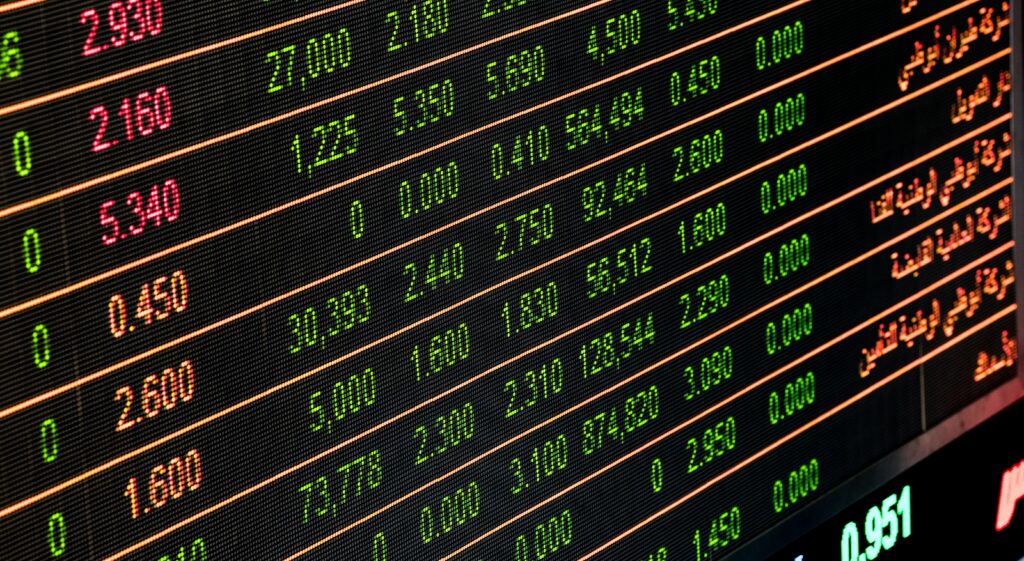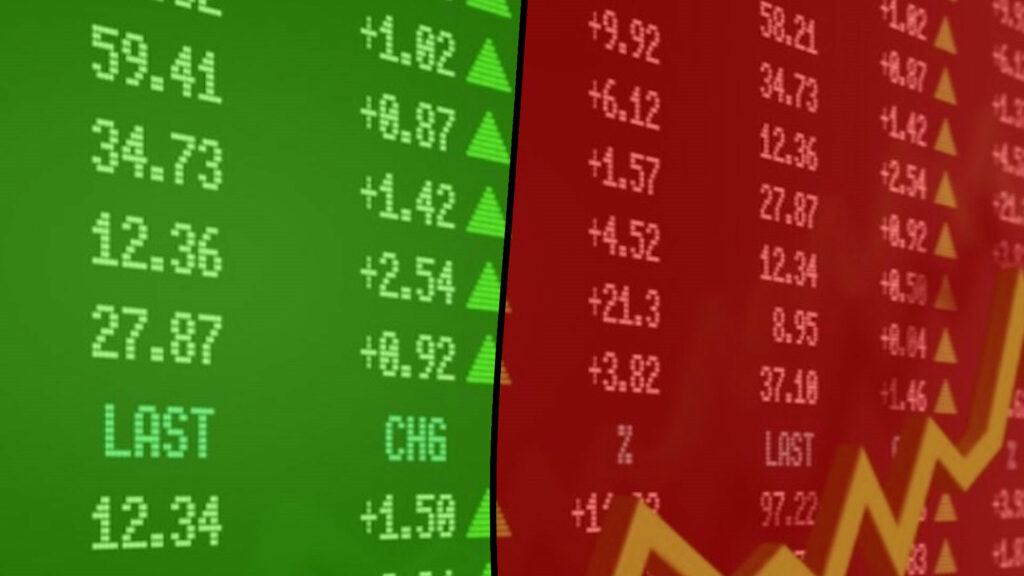Ever come across terms like SPY stock, QQQ stock, or the S&P 500 in financial discussions? Contrary to what many think, these aren’t individual stocks. Navigating the nuances between ETFs like SPY and QQQ and individual stocks can be challenging for beginners, especially when they appear so similar on the stock market.
What Are Individual Stocks?
Let’s begin with the individual stock and everything we need to know about it. As mentioned in the previous lessons, an individual stock is a piece of ownership of a company. This would be like Google, Apple, etc. An individual stock can be found by its company name but often times you’ll see people mention it by its stock ticker. The ticker is just a short abbreviation for the company on the market.
For example, Apple’s ticker is AAPL, Amazon’s is AMZN. On social media or even some broker sites, you’ll see that the ticker is accompanied by a $ symbol in front of it. For example, on twitter, you’ll see people mention Tesla as $TSLA or Coinbase as $COIN.
When looking at individual stocks. Here is what you’ll often see through basic views. As you can see in the image above, we have a picture of Target’s stock price. If we scroll down, you’d also see some other information on a certain stock for that day.
So what exactly are we looking at here? Why does it matter? Well there are a few key details we need to know about individual stocks before we begin buying them. Because the price doesn’t tell everything. If Apple is the biggest company in the world, why is their share price only $160 while Tesla’s is nearly the same price? Well that’s what these other numbers will tell us.
Now I know, it’s overwhelming at first but we don’t need all of this info. The big ones we need to know are “Market Cap” and “Free Float”. Market cap is the total amount of money all the shares that a company has is worth altogether. For example, the image above shows META’s stock information. Their market cap is 458 billion dollars meaning that’s what all the shares value add up to. Free float is the available shares for the public on the market. META has a free float of 2.27 billion shares. Meaning these are all public shares. META and other large corporations may own more shares but these are not available to the public to trade.
So to answer the question about why Apple is a bigger company than Tesla but has a lower price. Apple has a free float of 16 billion shares while Tesla only has a free float of 864 million shares. Now you’re probably asking yourself, how would I know what makes a stock worth investing in then if prices are based on shares available or supply and demand and all that? Well with some math and looking into the company’s financial reports. However, that is for a later lesson!
What are ETFs and How do They Work?
Now that we have a basic understanding of what an individual stock is and a basic understanding of some of the numbers associated with the stock. Let’s move into Index Funds or ETFs or Exchange-traded funds. ETFs are amazing because they are a combination of individual stocks that are pooled into one portfolio that is professionally managed by the ETF owner. In return, you only buy the ETF in exchange for exposure to all the companies that the ETF tracks.
For example, a very popular ETF, is $SPY or $VOO, they are managed by large financial giants. These two ETFs are a combination of the 500 biggest stocks in the world. Nobody is ever going to buy 500 individual stocks. That would be just way too hard for the average person to keep track of. But ETFs allow you all that exposure. I know it can be a bit confusing at first. But essentially ETFs track large numbers of individual stocks. You can buy into this to get exposure to all these stocks without having to manage it all yourself.
Think of it like this, it’s a safer way to invest because it minimizes your risk by a big margin. If you own individual stocks, the risk is much higher because if that stock tanks, you are exposed to all the downside. Whereas with ETFs, your risk is minimized because the ETF is diversified with more than just that individual stock. If you’re holding 3 stocks and 1 of them tanks down. There’s a good chance you can lose 20% of your account value. But if you’re holding an ETF that’s tracking 500 companies. 1 company tanking down is not going to hurt you at all.
It’s also important to know that there are 3 major indexes that all of the market participants follow. The first one is the S&P 500 which tracks the 500 largest companies in the world. Next we have the Dow Jones, which tracks 30 of the largest companies in the market. Finally we have the Nasdaq Composite index, which tracks almost every stock traded on the Nasdaq exchange. It’s important to pay attention to these because they are great indicators on how the overall stock market is doing.
What’s great about ETFs is that there are so many out there. As we said, $SPY is great for all around market exposure. But if you want to invest in consumer discretionary, you can buy the $XLY etf which tracks consumer companies like Amazon and Target. Or if you want to invest in the clean energy sector, you can invest in an ETF like $QCLN. There are ETFs for everything and a quick google search can find the right ETF for you.
How Do I Know What Is Best For Me?
There are two types of investors in the market nowadays. There are passive investors and active investors. Passive investors are people who don’t have the time to watch the market or their specific companies’ news. They just want to sit and let their money grow for them over a long period of time. If you’re a passive investor, ETFs are the best way to go about investing. Because ETFs are managed for you and they are easy to keep track of.
So why doesn’t everyone go ahead and buy ETFs then? Well their gains are limited to whatever the market does that year. Some people enjoy trying to beat out the indexes by picking individual stocks because their gains can be so much greater. But of course, the risk is much higher too.
The people that like to pick individual stocks are active investors. People who enjoy paying attention to the market. The average return for the S&P 500 index is around 8% a year. Investing in Tesla at the start of 2021 and selling at the end would’ve given you a 40% gain on the year. Granted Tesla is a lucky example and is extremely overvalued but that’s for another lesson…
As we conclude, I want you to go to https://www.etf.com and explore some of the ETFs. Everyone should have some sort of ETF in their portfolio whether they are an active investor or a passive investor. Find some that you like and see what companies each one tracks. ETFs and stocks combined can make you a lot of money!



